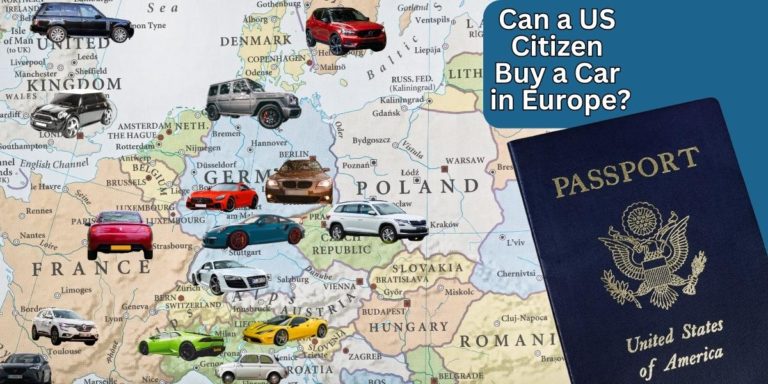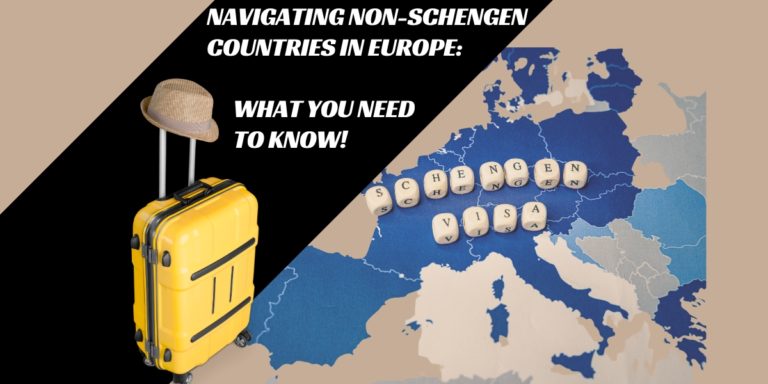How to Register a Vehicle in Europe Without Residency

Have you ever dreamt of venturing on a road trip through Europe’s exquisite landscapes? Or are you a business professional seeking to streamline your regular cross-border travels? You may be a digital nomad or have the flexibility of working remotely. If you’re wondering how to register a car in Europe without residency, we’ve got you covered.
Whatever the reasons for your long-term visit to Europe or frequent stays, having your own set of wheels in Europe has its advantages. Buying and registering a car in Europe without residency is an uphill battle.
Still, with the proper guidance and resources, it is entirely manageable. This guide thoroughly breaks down the process and introduces an ideal solution for those without residency in Europe.
The Charm of European Cars & the Need for a Car in Europe
Before delving into the process, let’s understand why owning a European car could be advantageous. European cars are world-renowned for their superior quality, durability, and exceptional performance. Brands like Mercedes-Benz, BMW, Audi, and Volvo offer luxury, comfort, and reliability that are hard to match.
Moreover, owning a vehicle enhances your European travel experience. It offers unparalleled convenience, freedom, and potential savings on extended car rentals.
I often travel by car in Europe, and a 2-4 week trip is not enough to truly experience the rich cultures of many European countries.
A European car lets you stay in one place for as long as you want, so you can soak in the city or country you visit. Plus, it lets you explore less touristy places for a more genuine experience.
Understanding Registration Requirements
Car registration rules can be different in various European countries.
But the typical things you usually need are:
- Proof of Identity: Typically involves your passport or any internationally recognized ID.
- Proof of Purchase: This refers to the detailed invoice from the car dealer or private seller.
- Valid Insurance: European laws mandate at least third-party liability insurance for all vehicles.
- Roadworthiness Certificate: Certifies that your vehicle meets all safety and environmental standards.
Breaking down the steps: How to register a car in Europe
Now, let’s break down the car registration process in Europe into easy-to-follow steps:
- Step 1: Purchasing the Vehicle
Find a reputable dealership or private seller after choosing the car model that suits your preferences and budget. Many large dealerships have experience selling to non-EU residents and can answer related questions in your case.
You’ll need to work out with the seller whether they will deliver your car or you will pick it up. Ensure you obtain a detailed invoice stating the terms of the transaction. You’ll need to keep the bill of sale or sales contract for your records and to prove that you are the new rightful owner.
- Step 2: Securing Car Insurance
Once you have your vehicle, the next step is obtaining valid insurance coverage. Always choose a recognized provider and consider comprehensive insurance coverage for added protection.
The insurance company you choose will depend on the country where you wish to register your car. You can find many resources online to find a quote for your specific vehicle.
One example is check24.de, an aggregate website that compares many services, including car insurance, in Germany.
Remember that most insurance companies will insure a vehicle in your name if you have a local address.
To get car insurance as a non-resident or if you want to register your car in another country, you can either:
- Find an insurance provider that offers coverage for non-residents. OR
- Contact a friend or family member in the country where you want to register your car. Some insurance companies may allow someone other than the owner and driver to be the policyholder. If you have a friend willing to take out the policy for you, you have a true friend! Be sure to ask them for a policy covering other drivers. Remember, you owe him one!
- Step 3: Acquiring a Roadworthiness Certificate
Next, you need to acquire a Roadworthiness Certificate. This involves getting your car inspected at a state-approved vehicle inspection site. Passing a safety and emissions test for your car is done on-site, and many car dealerships offer this service at an additional cost.
FYI: There is a catch-22 situation here with Steps 2 and 3. You can only drive to the safety and emissions test site if your car is insured with at least temporary plates. And you can only get your vehicle registered by passing safety and emissions testing.
Therefore, I recommend purchasing a car that has already passed safety and emissions and comes with the certificate in the sale. Alternatively, you can pay an extra fee for the dealership or seller to provide you with a new roadworthiness certificate. In Germany, it’s called TÜV and typically costs around €100.
- Step 4: Registering the Vehicle
With all the necessary documents, head to the local vehicle registration authority. Provide your identification, evidence of purchase, proof of insurance, and a Roadworthiness Certificate. In most situations, you have to present a proof of a local address. Remember, you’ll typically need an IBAN account number from which your yearly vehicle tax will be deducted.
You’ll need a local address to register a car in your name. However, some countries allow you to register your car at a relative or friend’s address. You’ll need to check with the country you plan to register a vehicle. If you have a friend who agrees to register the vehicle at his address, you must be blessed with good friends! Country Of Residence
In Germany, this is possible, and it’s called Empfangsberechtigter or authorized recipient. Your friend agrees to be the authorized recipient using his address for any communication between the DMV and you relating to your car.
If you fail to pay the tax for your car or your insurance, your friend will hear about it from the DMV or get notices at his address.
So, choose your friend wisely because he will need to be willing to help you if you get into a sticky situation.
- Step 5: Paying the Required Fees
Once you’ve handed in the documents, the authorities will determine the registration fee and any applicable taxes. Once the amount is determined, make the payment.
These fees are usually very reasonable, so it’s nothing that will break the bank. Vehicle registration can be as low as €30 in some European countries.
- Step 6: Receiving Your License Plates
The authority will process your application. Your vehicle registration certificate and license plates will be issued upon payment. Affix the plates to your car as per local regulations.
You can request a third license plate for peace of mind if you venture into a bad neighbourhood where people have been known to steal license plates. You will also need a third license plate if you intend to tow a trailer or bike rack behind your vehicle.
Addressing the Challenges: The CarTurf Solution
While the above process is straightforward, it’s all fine and dandy ONLY for those with residency, a local address, or some other connection.
This is where CarTurf steps in and helps anyone who needs to meet the above requirements. Or you prefer not to bother your German pen pal Otto.
CarTurf provides a complete solution for people from other countries who want to buy, register, and drive a car in Europe.
Benefits of CarTurf include:
- No Physical Presence Needed: You don’t have to be there in person for car registration with CarTurf. Their experts handle all administrative tasks, making the process seamless and efficient.
- Ready-to-Drive Car Delivery: CarTurf goes beyond registration. Ensuring a fully insured, registered, and ready-to-drive car is delivered to your chosen location.
- Increased Savings & Free Time: CarTurf can help lower your insurance premiums. They insure vehicles in bulk and pass on savings to you. Non-residents in Europe don’t typically have access to the lowest insurance premiums.
- Access to Best Cars in Europe: CarTurf operates in Germany, which has the best new and used car market for buyers.
- Reliable Partner on the Ground: CarTurf is a service provider, and they are dedicated to getting the best for their customers.
CarTurf’s prices are clear, and they don’t depend on commissions. So, you can purchase a more costly car or be encouraged to get upgrades you don’t require.
Picking CarTurf removes the difficulties and intricacies of registering a car in Europe when you don’t live there.
CarTurf makes everything easy and stress-free by managing all the paperwork and delivering a car that’s good to go.
Contact us, start a chat, or check out the available service plans.
Final Thoughts
Registering a car in Europe without residency is daunting. Nonetheless, it can be done successfully with thorough planning, knowledge, and the help of services like CarTurf.
Ready to start your European road trip or streamline your cross-border business commute? Let CarTurf take care of the complicated car registration details for you. So you can focus on enjoying your drives through Europe’s beautiful scenery.
Stay connected for more insightful tips, advice, and guides on registering and buying a car in Europe.






